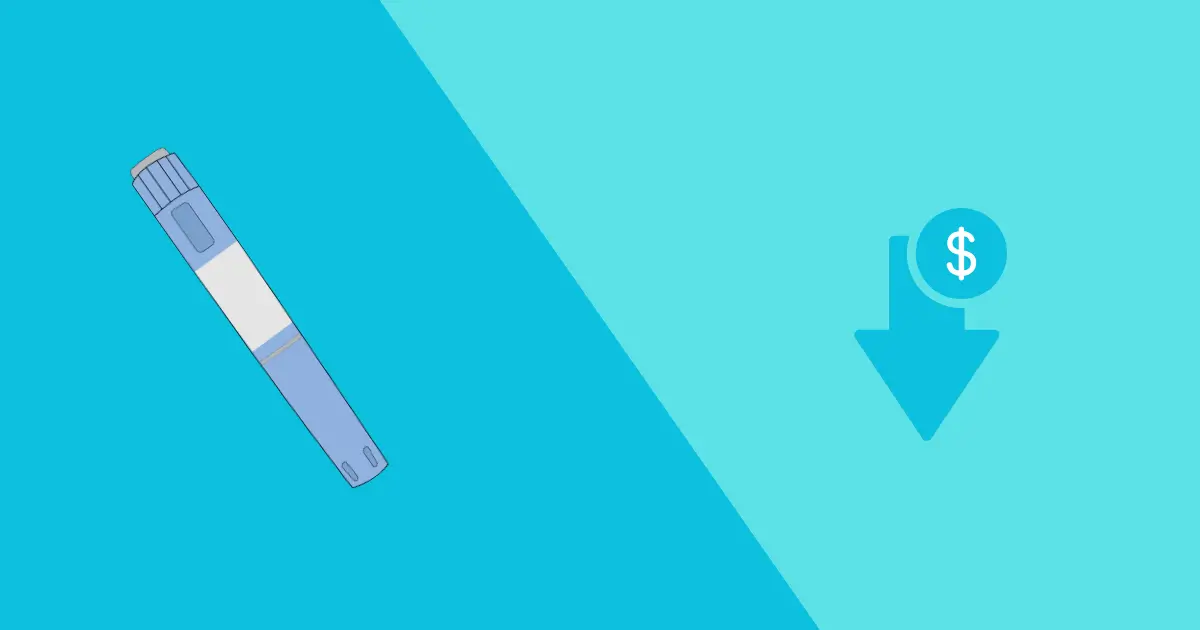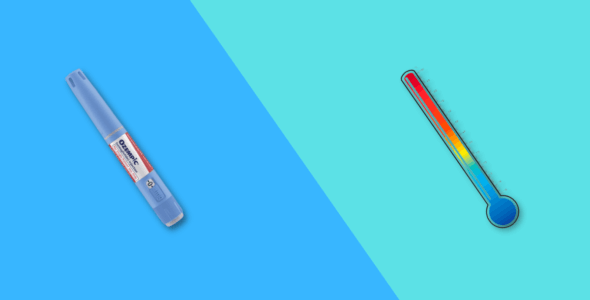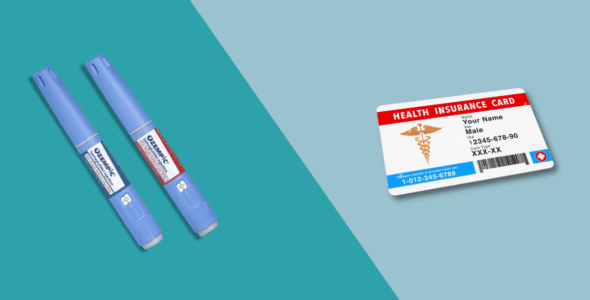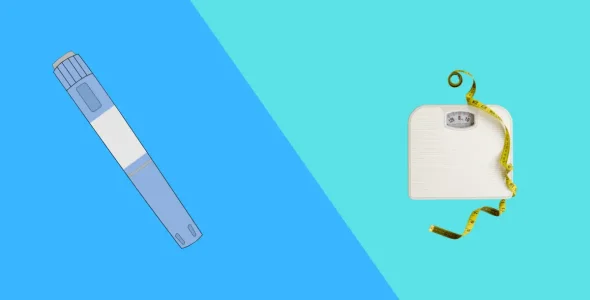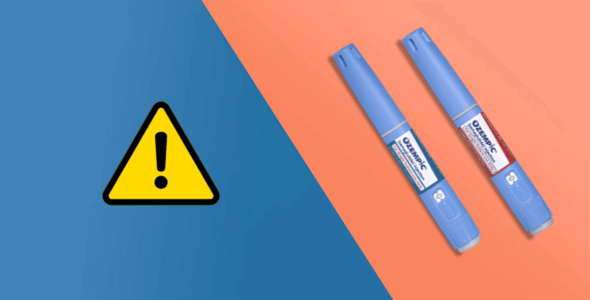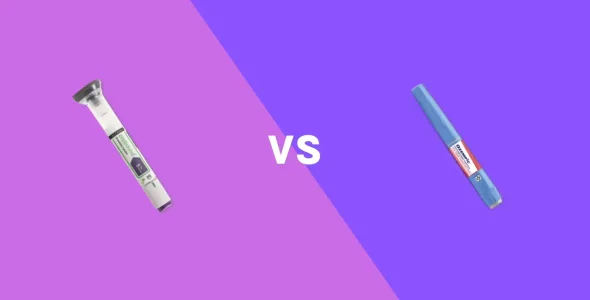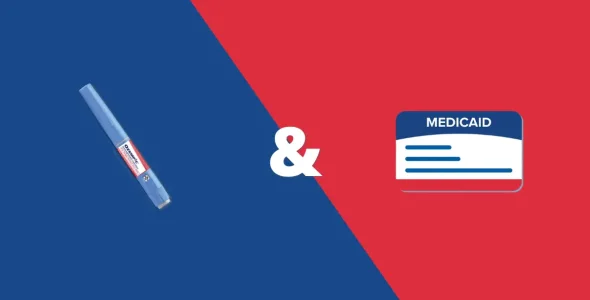Ozempic generic in 2025: What you need to know
Ozempic’s price is high but is a generic finally here in 2025? Unfortunately, not yet. Keep reading to find out when a generic version of Ozempic will be available in the United States and how to save until then.
Key highlights
- As of 2025, there is no FDA-approved generic Ozempic in the United States, but alternatives and cost-saving options exist.
- An FDA-approved generic version of Ozempic won’t be available until at least 2031 because the drug is still protected by patents.
- Some pharmacies sell compounded versions of semaglutide as cheaper options, but the FDA does not approve these medications and compounded medications are not considered generic drugs.
- There are other ways to save on Ozempic until a generic is available, including using the Ozempic Savings Card, prescription discount cards, and the NovoCare Patient Assistance Program.
Ozempic (semaglutide) is an FDA-approved glucagon-like peptide-1 (GLP-1) receptor agonist used to lower blood sugar levels in people with type 2 diabetes and off-label for chronic weight management in people with overweight or obesity. It is also used to reduce the risk of major adverse cardiovascular events in adults with cardiovascular disease.
Ozempic is in high demand across the U.S., largely due to its effectiveness in diabetes and weight loss. However, it comes with a high cost, often exceeding $1,000 without insurance. That adds up to around $12,000 a year, making it unaffordable for many patients.
Many people are searching for generic alternatives because Ozempic is expensive, often hard to find due to on-and-off shortages, and not always covered by insurance, making it difficult for many to afford or access regularly.
Is there a generic version of Ozempic (semaglutide) yet? We break down lower-cost alternatives, expected release dates, and cost-saving options.
Is there a generic for Ozempic in 2025?
As of May 2025, there is no FDA-approved generic version of semaglutide (the active ingredient in Ozempic and Wegovy) available in the United States. Novo Nordisk’s patents on semaglutide expire in December 2031, which is the earliest a generic could be marketed in the U.S.
Ozempic is a brand-name drug made by Novo Nordisk, and it is protected by multiple U.S. patents, including key patents covering its active ingredient, semaglutide. The main patent for the injectable form of semaglutide, used in Ozempic and Wegovy, is set to expire in 2032, which legally prevents generic drug manufacturers from producing identical versions until that date unless they successfully challenge the patents in court or reach a settlement with Novo Nordisk.
In the U.S., pharmaceutical patents typically last about 20 years from the filing date, giving the brand manufacturer a long period of market exclusivity. This exclusivity helps companies recover the high costs of drug development but also delays the availability of lower-cost generics. In the case of semaglutide, some patents may extend into 2041, further complicating and delaying the timeline for a generic version of Ozempic.
Sandoz has announced plans to launch generic Ozempic and Wegovy in Canada in 2026, but the generic will not be available in the U.S. until at least 2031.
Compounded semaglutide has been available in the U.S. during on-and-off drug shortages and when the patient needs a custom formulation that is not commercially available. However, these are not FDA-approved generics, and their quality and safety are not guaranteed to the same standard as FDA-approved medications. Patients should use caution and consult their healthcare provider before considering these options.
Compounded semaglutide: What you need to know
Compounded semaglutide is a custom-made medication prepared by a compounding pharmacy, typically in response to drug shortages or patients’ individual needs such as custom dosing not commercially available. It is not FDA-approved, but can be legal under certain conditions, especially when the branded drug (Ozempic or Wegovy) is on the FDA’s shortage list or when the patient needs a custom dose or formulation that isn’t commercially available.
Compounded semaglutide is typically prepared as needed for a patient or in small quantities at a compounding pharmacy which creates personalized medications by mixing or altering ingredients to meet the specific needs of individual patients. These pharmacies can adjust dosage forms, remove allergens, or create alternatives when commercial drugs are unavailable to meet the needs of patients.
When you get semaglutide from a licensed compounding pharmacy, it is made with semaglutide, and other ingredients such as vitamin B6, and can be adjusted by the pharmacy to suit your individual needs. You will need a prescription from your healthcare provider.
Compounded semaglutide is not FDA-approved, so its safety and effectiveness are not reviewed or evaluated by the FDA.
It’s important to understand that compounded semaglutide is not the same as a generic. A generic drug is FDA-approved, tested for safety and effectiveness, and bioequivalent to the brand-name version. Compounded semaglutide has not undergone this level of review.
Compounding pharmacies began offering semaglutide because of widespread shortages of Ozempic and Wegovy. With demand surging for weight loss and diabetes treatment, these customized versions became a temporary workaround.
Some compounded products have used semaglutide salts or ingredients from unregistered manufacturers, which increases the risk of contamination or incorrect dosing.
Patients should talk to their doctor and make sure the source is reputable and compliant with current FDA regulations.
When will generic Ozempic be available in the United States?
Generic Ozempic (semaglutide) is not expected to be available in the United States until December 2032, due to existing patent protections held by Novo Nordisk. These patents cover both the injectable form (Ozempic and Wegovy) and the oral form (Rybelsus).
A generic drug is a lower-cost version of a brand-name drug with the same active ingredient that must undergo FDA approval to prove its bioequivalence, dosage, safety, and effectiveness.
Novo Nordisk holds 29 patents protecting semaglutide (Ozempic/Wegovy/Rybelsus) in the U.S., with key patents expiring as late as 2033. A generic entry may be possible by 2026 if legal challenges succeed or patents expire earlier.
The primary compound patent for injectable semaglutide (Ozempic, Wegovy) is set to expire in December 2032. This patent covers the semaglutide molecule itself, which is central to both Ozempic and Wegovy. While other device-related patents may expire earlier, they do not affect the composition of the drug.
The key formulation patent for oral semaglutide (Rybelsus) is expected to remain in effect until 2036, potentially delaying generic competition for the oral version of semaglutide.
Factors that may delay generics include:
- Legal battles: Ongoing patent litigation between the brand-name company and generic manufacturers may delay generic or biosimilar approval even after patents start to expire. In October 2024, Novo Nordisk and Mylan/Natco settled the U.S. patent litigation related to generic Ozempic. While settlements can sometimes clear the way for earlier generic entry, the expiration of the compound patent in 2032 is the main determinant for generic availability.
- Manufacturing challenges: Semaglutide is a peptide-based drug that requires complex synthesis and sterile production, so not many manufacturers can make it at scale.
- Biologic complexity: Unlike small-molecule drugs, semaglutide is a biologic, so any generic would be a biosimilar, which is a more complex manufacturing process that is highly regulated and more expensive than making a generic drug.
Ozempic is very expensive, costing about $1,000 a month in the U.S., so many patients are feeling the financial squeeze. U.S. Senator Bernie Sanders says generic makers could offer Ozempic for less than $100 a month, which would reduce out-of-pocket costs for patients and increase access.
Semaglutide Patents
| Patent No. | Expiration Date | Type of Patent |
|---|---|---|
| Ozempic | ||
| 8114833 | Aug. 13, 2025 | Formulation patent |
| 8129343 | Dec. 5, 2031 | Compound patent |
| 8536122 | Mar. 20, 2026 | Compound patent |
| 8684969 | Oct. 20, 2025 | Injection device |
| 8920383 | Jul. 17, 2026 | Mechanism for injection device |
| 9108002 | Jan. 20, 2026 | Injection device |
| 9132239 | Feb. 1, 2032 | Mechanism for injection device |
| 9457154 | Sep. 29, 2027 | Injection device |
| 9616180 | Jan. 20, 2026 | Injection device |
| 9687611 | Feb. 27, 2027 | Injection device |
| 9775953 | Jul. 17, 2026 | Mechanism for injection device |
| 9861757 | Jan. 20, 2026 | Injection device |
| 10220155 | Jul. 17, 2026 | Injection device (syringe) |
| 10335462 | Jun. 21, 2033 | Method for treating type-2 diabetes |
| 10357616 | Jan. 20, 2026 | Injection device |
| 10376652 | Jan. 20, 2026 | Injection device |
| 11097063 | Jul. 17, 2026 | Injection device (syringe) |
| 11311679 | Jan. 20, 2026 | Injection device |
| 11446443 | Oct. 20, 2025 | Injection device |
| RE46363 | Aug. 3, 2026 | Mechanism for injection device |
| Wegovy | ||
| 8129343 | Dec. 5, 2031 | Compound patent |
| 8536122 | Mar. 20, 2026 | Compound patent |
| 9764003 | Jun. 21, 2033 | Method for reducing body weight |
| 10888605 | Aug. 24, 2038 | Formulation patent |
| 11318191 | Feb. 17, 2041 | Formulation patent |
| 11752198 | Aug. 24, 2038 | Formulation patent |
| 12029779 | Oct. 10, 2038 | Method for reducing body weight |
| Rybelsus | ||
| 11833248 | Feb. 1, 2039 | Formulation patent |
| 8129343 | Dec. 5, 2031 | Compound patent |
| 8536122 | Mar. 20, 2026 | Compound patent |
| 9278123 | Dec. 16, 2031 | Formulation patent |
| 10086047 | Dec. 16, 2031 | Formulation patent |
| 10278923 | May 2, 2034 | Method of treating diabetes or obesity |
| 10933120 | Mar. 15, 2033 | Formulation patent |
| 10960052 | Dec. 16, 2031 | Formulation patent |
| 11382957 | Dec. 16, 2031 | Formulation patent |
| 11759501 | Mar. 15, 2033 | Formulation patent |
| 11759502 | Mar. 15, 2023 | Formulation patent |
| 11759503 | Mar. 15, 2023 | Formulation patent |
Side effects of Ozempic
Ozempic is a safe and effective subcutaneous weekly injection that belongs to the drug class GLP-1 receptor agonist used for lowering blood sugar levels, but it can cause gastrointestinal side effects. These symptoms usually improve as your body gets used to the medication.
The most common side effects of Ozempic include:
- Nausea
- Vomiting
- Diarrhea
- Stomach pain
- Decreased appetite
- Indigestion
- Belching
- Constipation
- Headache
Ozempic can cause serious side effects such as pancreatitis (inflammation of the pancreas), gallbladder problems, changes in vision (diabetic retinopathy), allergic reactions, and kidney problems or kidney failure.
Ozempic can also cause low blood sugar (hypoglycemia), especially if you are taking other diabetes medications. Over time, this can lead to episodes of hypoglycemia, which need careful management, so monitor your blood sugar levels regularly.
Ozempic has a black box warning from the U.S. Food and Drug Administration for the risk of thyroid tumors or thyroid cancer, including medullary thyroid carcinoma (MTC).
It is essential to be aware of these potential side effects and seek medical advice from your healthcare professional if you notice any concerning symptoms.
Why Ozempic generic matters
A generic version of Ozempic approved by the FDA would be a game changer, especially for patients with type 2 diabetes and those using it off-label for weight management.
Right now, the high price of Ozempic, often over $1,000 a month without insurance, is out of reach for many, creating barriers to treatment and inconsistent medication use.
Generic drugs are much cheaper than brand-name drugs because the manufacturer doesn’t have to pay for the original research and development. Once FDA-approved, generic drugs are required to have the same safety, strength, and effectiveness as the brand-name drug but are available at a fraction of the cost of the brand-name drug. This has a significant impact on individual patient affordability and overall healthcare spending.
A lower-cost generic semaglutide could also improve treatment adherence, meaning more patients would be able to stay on their medication consistently. Better adherence often means better health outcomes, fewer complications, and lower long-term medical costs.
There is still uncertainty about when an FDA-approved generic Ozempic will be available in the U.S. The drug is protected by several patents, and the main patent doesn’t expire until at least December 2031. Pharmaceutical patent law is complex, and brand-name companies can file new patents or sue to delay generic competition.
There are ongoing policy discussions and advocacy efforts to make GLP-1 drugs like semaglutide more affordable and accessible, including calls for the government to negotiate drug prices and expand the use of compounding in cases of shortages. Unfortunately, until a generic is approved by the FDA, patients will continue to face high costs and limited access.
Cheaper alternatives to Ozempic
Here are some commonly available alternatives to Ozempic:
For type 2 diabetes
Rybelsus (oral semaglutide)
- Rybelsus (same active ingredient as Ozempic) is an oral tablet that is FDA-approved for lowering blood glucose levels in adults with type 2 diabetes and may also help with weight loss. Although it’s not FDA-approved to reduce the risk of heart attack or stroke, studies suggest it’s safe for people with heart disease.
- Unlike Ozempic, which has proven cardiovascular benefits in people with type 2 diabetes and heart disease, Rybelsus does not yet have established evidence of heart protection, though research is ongoing. It’s a convenient option for those who prefer pills, but it may not be a full substitute for Ozempic in all situations.
Mounjaro (tirzepatide)
- Mounjaro (tirzepatide) is an FDA-approved medication to improve blood sugar levels in adults with type 2 diabetes. It’s also prescribed off-label for reducing body weight combined with diet and exercise.
- Mounjaro works by targeting two hormones (GLP-1 and GIP), unlike Ozempic, which only targets GLP-1, which may explain its stronger effects. It’s a powerful option, but the higher cost can be a barrier for many patients.
- Mounjaro is a newer injectable medication that is more potent than Ozempic for both blood sugar control and weight loss. However, it is also more expensive and may not be covered by all insurance plans.
Victoza (liraglutide)
- Victoza (liraglutide) is another injectable GLP-1 agonist that lowers blood sugar in adults with type 2 diabetes with known heart disease, but it needs to be injected once a day instead of once a week because it doesn’t stay in the body as long as Mounjaro and other alternatives.
- Unlike Mounjaro, Victoza has proven heart protection benefits. It’s approved for people aged 10 and older. However, Victoza has fewer side effects compared to Mounjaro.
Trulicity (dulaglutide)
- Trulicity (dulaglutide) is a once-weekly subcutaneous injectable GLP-1 agonist that helps control blood sugar levels and reduce cardiovascular risk in adults and children from 10 years of age with type 2 diabetes. Some people may also experience weight loss with it.
- Insurance coverage for Trulicity may vary, and some plans may cover it for diabetes but not for weight loss. If you can’t afford it, the manufacturer has assistance programs that may help reduce the cost for eligible patients. Check with your insurance and your healthcare team for details.
Byetta (exenatide)
- Exenatide, also known as Byetta, is an injectable medication for type 2 diabetes. It also helps with weight loss by increasing feelings of fullness and decreasing food intake. It comes in two forms: fast-acting, taken twice daily, and slow-release, taken weekly.
- Exenatide is prescribed when other meds aren’t working and is often used with diet, exercise, and sometimes other diabetes meds for better results.
Generic liraglutide
- The FDA approved liraglutide, the first generic of a once-daily GLP-1 injection, in December 2024.
- Manufactured by Hikma Pharmaceuticals, this once-daily injectable is for glycemic control in adults and pediatric patients 10 years and older with type 2 diabetes. It has a boxed warning for thyroid C-cell tumors and other safety considerations.
- Biocon Limited launched its generic liraglutide in the UK in February 2025 under the brand names Liraglutide Biocon for diabetes and Biolide for chronic weight management. This was the first time a generics company got approval for generic liraglutide in a major regulated market.
For weight loss
Wegovy (semaglutide)
- Wegovy contains the same active ingredient as Ozempic, semaglutide, but at a higher dose (2.4 mg). It is specifically approved for chronic weight management in adults with obesity or overweight who have at least one weight-related health condition, such as high blood pressure or type 2 diabetes.
- In addition to weight loss, Wegovy is approved to lower the risk of serious heart problems for adults who are overweight or obese and have heart disease.
- Wegovy and Ozempic are also FDA-approved for reducing the risk of major cardiovascular events (heart attack, stroke) in adults with type 2 diabetes and known heart disease and for reducing the risk of worsening kidney disease and cardiovascular death in adults with chronic kidney disease and type 2 diabetes.
- While both Wegovy and Ozempic are weekly injections, Wegovy is intended for weight loss, while Ozempic is mainly used for type 2 diabetes.
Zepbound (tirzepatide)
- Zepbound is an FDA-approved weight loss drug that contains the same active ingredient as Mounjaro, tirzepatide.
- Zepbound is FDA-approved for weight management in adults with obesity (BMI of 30 or higher) or overweight (BMI of 27 or higher) and related health issues like high blood pressure or diabetes.
- Zepbound works by targeting two hormones (GLP-1 and GIP) to help reduce appetite and improve blood sugar control, making it a powerful option for weight loss. It’s administered as a weekly injection, similar to Mounjaro.
Saxenda (liraglutide)
- Daily injection approved for weight loss.
- Approved in 2010, Saxenda (liraglutide) was the first GLP-1 medication approved for weight loss in adults with obesity or overweight with at least one weight-related health issue. It is also approved for certain children 12 and older with obesity.
- Saxenda, being an older GLP-1 medication, has some downsides compared to newer options like Zepbound. For example, it’s taken daily instead of weekly, and you might lose less weight with it.
- In a 56-week clinical trial, people taking Saxenda 3 mg once a day lost an average of 18 lbs, while those using a placebo injection only lost 8 lbs. It has also shown heart health benefits for people with diabetes or those at high risk of heart disease.
How to save on Ozempic without insurance
The list price of Ozempic is $997.58 for a 28-day supply without insurance, which is about $249.40 per week or $11,970.96 per year. The retail price you pay can vary depending on which pharmacy and location you purchase from. The average retail price can range from $800-$1,000 per month.
Here are some strategies for reducing the cost of brand-name Ozempic:
Checking insurance coverage
Check with your insurance to see if they cover Ozempic. If you have type 2 diabetes mellitus, insurance coverage is more likely, as most insurance plans, including Medicare and Medicaid (except in some states), do not currently cover weight loss medications.
Patients often face prior authorization requirements, where the insurer must approve the medication before it’s approved for coverage. Some plans also enforce step therapy, meaning patients must try and fail cheaper or older medications (like metformin) before gaining access to newer GLP-1 drugs.
Semaglutide manufacturer coupons are intended to make the medication more affordable by lowering the copays you pay out-of-pocket. If you have private or commercial insurance, the manufacturer coupon might help cover the difference between what your insurance pays and what you are required to pay out-of-pocket, reducing your co-pay to as low as $0.
Ozempic Savings Card
If you have commercial insurance that covers Ozempic, you could pay as little as $25 per month with the Ozempic Saving Card program, with maximum savings of $100 for a 1-month prescription, $200 for a 2-month prescription, and $300 for a 3-month prescription.
To apply for the Ozempic Savings Card and check if you qualify, visit the Novo Nordisk website. If you already paid for your Ozempic before you signed up for the savings program, you might be able to get some of your money back using Novo Nordisk’s Savings Offer reimbursement form, if you qualify.
People with government-sponsored insurance like Medicaid, Medicare, VA, TRICARE, or similar plans can’t use the Ozempic Savings Card. If you have employer insurance but it doesn’t cover Ozempic, you also can’t use the card. It’s only for people with private or commercial insurance that covers Ozempic.
Novo Nordisk Patient Assistance Program (PAP)
Novo Nordisk’s patient assistance program (PAP) provides free Ozempic to help low-income, uninsured, and underinsured individuals access their medication for free.
The NovoCare Patient Assistance Program (PAP) helps low-income individuals who are uninsured or underinsured and cannot afford their medications. If you qualify, the program will provide you with free Ozempic or Rybelsus.
To apply, you need to meet certain income and eligibility requirements:
- You must be a U.S. citizen or a legal resident
- Your total household income should be at or less than 400% of the federal poverty level (FPL)
- You are uninsured or have Medicare
- You do not have any commercial or private insurance coverage
- You should not be enrolled in any federal, state, or government programs such as Medicaid, Veterans Affairs (VA), or low-income subsidies (LIS)
You can visit the NovoCare website to check if you qualify and start the application process, or call 1-866-310-7549.
If you’re eligible, there may be income limits, so having proof of income documents like recent pay stubs or tax returns ready can help speed up the process. Also, keep in mind that Patient Assistance Programs usually only cover the medication when it’s prescribed for its approved use, so using it for weight loss without type 2 diabetes may not qualify.
Pharmacy discount cards
Pharmacy discount programs like GoodRx and SingleCare can help lower the cost of medications, including Ozempic, if you’re paying out of pocket.
- GoodRx provides discount coupons that can be used at most major pharmacies, including Walgreens, CVS, and Walmart. For example, a 30-day supply of Ozempic might cost around $1,000 without insurance, but when using a GoodRx coupon, the price could drop to about $965 at participating pharmacies.
- SingleCare also offers discount cards that can be used at many pharmacies. You can get Ozempic for as low as $822 per month when using a SingleCare discount card.
- RxSaver offers prescription discount cards that can help you save up to 80% on medications, including Ozempic, at participating pharmacies like CVS, Walgreens, and Walmart. You can access these discounts instantly through their website or mobile app, with no membership or sign-up required.
Considering 90-day supplies
Sometimes, getting a 90-day supply of Ozempic can be cheaper than getting three 30-day supplies. Ask your pharmacist to compare the prices. If the 90-day option saves you money and you can afford it, it might be a better choice.
Is generic Ozempic legal?
No, generic Ozempic is not currently legal in the U.S. because the FDA has not yet approved any generic versions of semaglutide, the active ingredient in Ozempic. Patent protections on Ozempic remain in place, and until they expire and a generic version is reviewed and approved by the FDA, any product claiming to be “generic Ozempic” is not officially recognized or guaranteed to be safe.
There are growing reports of scams and fake medications sold online under the name “generic Ozempic.” Warning signs include extremely low prices, websites that don’t require a prescription, or sellers that won’t clearly show licensing information. These products can put your health at serious risk because the products may be contaminated, incorrectly dosed, or not contain semaglutide at all.
Compounded semaglutide can be legally made for patients who can’t access the brand-name drug or require custom dosing or formulations, but it should still only be obtained with a prescription and from a licensed U.S. compounding pharmacy.
Ozempic generic FAQs
Is compounded semaglutide the same as generic Ozempic?
No, compounded semaglutide is not the same as generic Ozempic. Ozempic is an FDA-approved brand-name drug, while compounded semaglutide is custom-made by pharmacies and not approved or reviewed by the FDA.
Will Ozempic go generic in 2025?
No, Ozempic is not expected to become available in generic form in 2025. Due to existing patent protections, the earliest potential release date for a generic version in the United States is December 2031. However, in some countries like Brazil and China, the patent for semaglutide is set to expire in 2026, which may allow generic versions to enter the market earlier in those regions.
What’s the cheapest alternative to Ozempic right now?
The cheapest alternatives to Ozempic right now are generic metformin and generic liraglutide. Metformin is affordable and helps control blood sugar, while generic liraglutide is cheaper than Ozempic and can also help with blood sugar and weight management.
Is it safe to buy Ozempic from Canada?
Buying Ozempic from Canada can be safe if you purchase it from a licensed Canadian pharmacy that requires a valid prescription and complies with Health Canada’s regulations. However, be cautious of online scams and counterfeit products; avoid websites that don’t ask for a prescription or offer unusually low prices, as these may be fraudulent.
Conclusion
As of 2025, there is no FDA-approved generic version of Ozempic available in the United States.
While compounded semaglutide has been offered by some pharmacies, it is not a generic drug and comes with important safety and regulatory concerns.
Fortunately, there are several FDA-approved alternatives, including other GLP-1 medications like Rybelsus, Wegovy, Mounjaro, Saxenda and Zepbound, which may be appropriate based on medical needs and insurance coverage.
Patients seeking more affordable options should consider manufacturer coupons, patient assistance programs, insurance appeals, or trying older GLP-1 drugs like generic liraglutide if appropriate.
It’s essential to consult with a healthcare provider to choose the best treatment plan that is suitable for your health condition, budget, and insurance coverage. Your provider can also help navigate insurance requirements, such as prior authorization or step therapy.
Stay updated on patent news and generic availability to make well-informed healthcare decisions.

